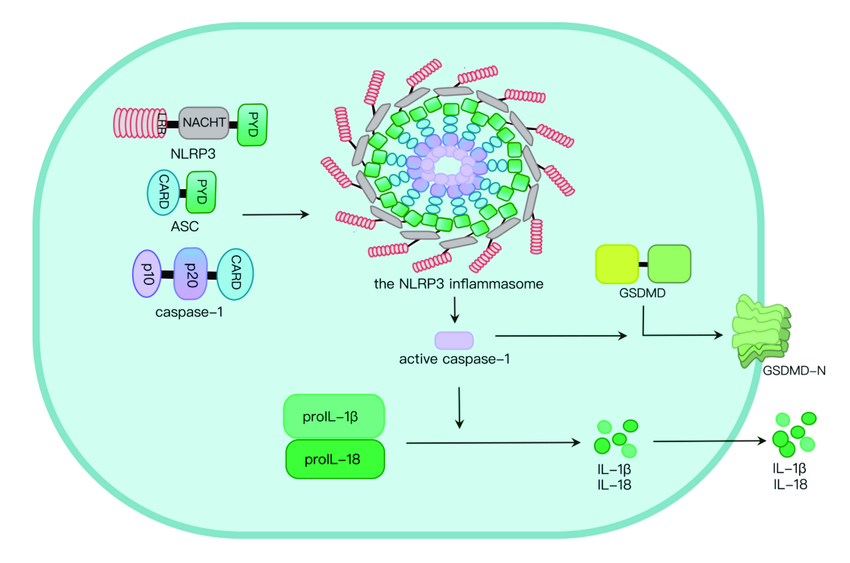Hepatitis E virus (HEV) is a widespread zoonotic pathogen and the leading cause of acute viral hepatitis globally. Recent studies have revealed that HEV infection is associated with a broad spectrum of extrahepatic manifestations, especially neurological disorders. It has been confirmed that HEV can cross the blood–brain barrier (BBB) and replicate within the central nervous system, triggering inflammatory responses. NLRP3 inflammasome activation during HEV infection has been reported in primary macrophages, as well as in serum of infected patients and rabbits. However, the role of NLRP3 in the central nervous system during HEV infection, along with the pathogenesis underlying HEV-induced neuroinflammation and tissue damage, remains incompletely understood.
A recent study led by Dr. Jijing Tian’s group from China Agricultural University investigated the hallmarks of NLRP3 inflammasome activation in response to HEV infection, using both in vivo and in vitro models. In an animal model, they found that the virus invaded the central nervous system of infected gerbils, leading to neuroinflammation in the brain tissues. Positive signals of NLRP3 and caspase-1 were observed in brain tissue, particularly in the cytoplasm of brain microvascular endothelial cells (BMECs), suggesting that these cells may play crucial role in HEV-induced inflammatory response within the central nervous system. The researchers further explored the induction of NLRP3 signalling in human brain microvascular endothelial cells (hBMECs) inoculated with HEV, finding a significant increase in NLRP3 gene expression following infection. Importantly, NLRP3 inhibitor MCC950 effectively blocked inflammasome activation and mitigated HEV-induced injury. This study demonstrated the role of NLRP3 inflammasome activation in both hBMECs and the central nervous system during HEV infection.
Brain Endothelial dysfunction is associated with numerous neurological disorders. The current findings shed light on the activation of the NLRP3 inflammasome in BMECs during HEV infection, providing new insights into HEV-induced neuroinflammatory response and the central nervous system injury.
Read the full article (J Viral Hepat. 2024 Aug 13): DOI: 10.1111/jvh.13998

